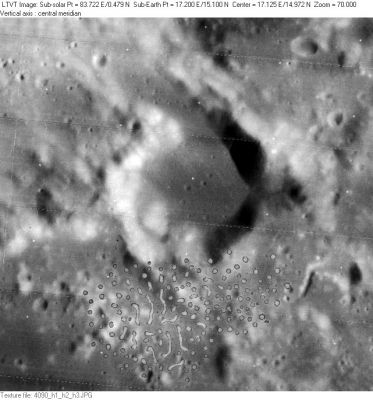Auwers
Contents
Auwers
|
Lat: 15.1°N, Long: 17.2°E, Diam: 20 km, Depth: 1.68 km, Rükl: 24 |
Images
LPOD Photo Gallery Lunar Orbiter Images Apollo Images
Orbital panoramic ITEK-camera frames which show Auwers, not mentioned in the LPI's list:
AS15-P-9896 and AS15-P-9901
Research: Danny Caes
Maps
(LAC zone 60A2) LAC map Geologic map LM map LTO map
Description
Description: Wikipedia
Additional Information
Depth data from Kurt Fisher database
- Arthur, 1974: 1.68 km
- Westfall, 2000: 1.07 km
- Viscardy, 1985: 1.63 km
- Cherrington, 1969: 3.38 km
- In LO-IV-090H, the shadow from the peak on the northeast rim indicates a depth of up to about 1900 m. - Jim Mosher
Nomenclature
- Named for Georg Friedrich Julius Arthur von Auwers (1838-1915), a German astronomer who specialized in precise measurements of the positions and motions of stars. Auwers was the second Bruce Medalist of the Astronomical Society of the Pacific where extensive links to information about him can be found.
- This feature was Catalog number 594 in the Collated List, where all three authorities adopted Beer and Mädler's convention of calling it Menelaus b
- The name was changed to Auwers in the original IAU nomenclature of Named Lunar Formations, adopting a suggestion by Krieger and König.
- A dome-like hill at 14° North/ 16°50' East (south of Auwers) is unofficially named Auwers Tholus by D.Caes. On top of that hillock there's a little craterlet. Although this feature superficially resembles Mairan T (but with a smaller summit pit) in broadband Lunar Orbiter views, they look quite different in the Clementine color ratio maps, so their origins may be different. - DannyCaes Jun 22, 2008
LPOD Articles
Bibliography
